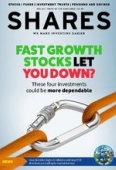Archived article
Please note that tax, investment, pension and ISA rules can change and the information and any views contained in this article may now be inaccurate.
The FTSE 100 was 2022’s star performer. So why has it ground to a halt?

So much for the bear market rally. The FTSE 100 ground to a halt in the latter part of May and fell over in early June, meaning it is now sitting on a 3.7% loss year-to-date.
While still better than many other parts of the world, it’s frustrating that the index stubbornly refuses to break out and trade higher. Investors want positive absolute returns, not simply a relative outperformance that still adds up to a small loss this year.
In today’s market environment, the FTSE 100 should in theory thrive as it offers everything investors currently want: income, cheap valuations, and plenty of companies whose products and services are in demand regardless of the state of the economy.
To see share prices move higher in the FTSE 100, one or more of the following must happen:
Companies need to produce better than expected earnings. This is not impossible. Barclays’ (BARC) and Lloyds’ (LLOY) earnings estimates have been rising since April; but those for FTSE 100 heavyweight HSBC (HSBA) have been falling since early May. Unilever’s (ULVR) estimates fell in early 2022 but have been slowly picking up in recent months; the same for Reckitt (RKT). Energy groups SSE (SSE) and Shell (SHEL) have both seen large upgrades to forecasts this year.
Investor confidence needs to improve. This has happened to some degree with CNN’s Fear & Greed index moving from ‘extreme fear’ a month ago to ‘fear’ now. However, the return of lockdowns in Shanghai put mining shares in retreat amid concerns over commodities demand, and the latest US inflation figures have spooked the market.
Inflation needs to stop being higher than expected. US consumer prices jumped by 1% in May month-on-month, significantly faster than the 0.3% hike recorded in April and above economists’ forecasts for a 0.7% rise.
Policy makers need to start panicking, argues Bank of America, as this is when markets could stop panicking. Central banks have been accused of being too slow to try and arrest the sharp rise in inflation. Many countries now face stagflation which is a rising cost of living and a slump in the economy.
If interest rates keep going up it could cause a recession which should eventually lead to lower inflation as people and businesses spend less. On the flipside, if rates stopped going up or were even cut, businesses might increase investments including hiring more staff, in turn pushing up wages and fuelling inflation. Central banks don’t want a recession, neither do they want high inflation, so they’re in a pickle.
It’s never been more important to park your money with financially strong companies rather than financially weak ones. If the economy grinds to a halt, the latter might have to go cap in hand to investors for more cash, and it seems unlikely that people will be willing to support the weak if they’ve just suffered a lengthy period of portfolio losses.
The FTSE 100 performance might seem frustrating, but most of its constituents are in good financial health, and you’ll be thankful of the generous dividends if the market stays fragile. Stick with it.
Important information:
These articles are provided by Shares magazine which is published by AJ Bell Media, a part of AJ Bell. Shares is not written by AJ Bell.
Shares is provided for your general information and use and is not a personal recommendation to invest. It is not intended to be relied upon by you in making or not making any investment decisions. The investments referred to in these articles will not be suitable for all investors. If in doubt please seek appropriate independent financial advice.
Investors acting on the information in these articles do so at their own risk and AJ Bell Media and its staff do not accept liability for losses suffered by investors as a result of their investment decisions.
Issue contents
Education
Funds
Great Ideas
- Fulham Shore is navigating cost pressures well and continues to expand
- Buy shares in Photo-Me for its underappreciated earnings potential
- Watches of Switzerland's shares have fallen too far, buy them now
- Don't worry about slowing orders at Chemring as it looks well placed
- Cheniere Energy outperforms the global stock market
- Still plenty of reasons to want to invest in this property expert
News
- Apple’s push into advertising poses challenges for Meta, Alphabet and Snap
- Airline shares dive amid prospect of high compensation costs
- Why shares in Primark parent Associated British Foods are languishing near five-year lows
- How decades high US inflation and new ECB direction are leading to market turmoil

 magazine
magazine








